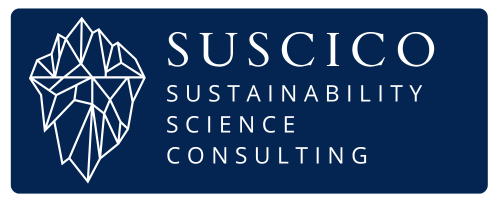Navigating the New GRI Emissions Standard: GRI 102 vs GRI 305
- 29/06/2025
- Posted by: Ildar Usmanov
- Category: ESG Reports

In today’s evolving ESG landscape, climate reporting is no longer just about tracking emissions — it’s about demonstrating strategic action. The New GRI Emissions Standard, officially known as GRI 102: Climate Change 2025, represents a major shift from the older GRI 305: Emissions 2016 standard.
Effective from January 1, 2027, this updated standard transforms how organizations report on climate-related impacts, including greenhouse gas (GHG) emissions, transition and adaptation plans, carbon removals, and social equity.
From GRI 305 to GRI 102: A Strategic Evolution
GRI 305: Emissions 2016 served as the foundation for disclosing air emissions, covering:
-
Scope 1, 2, and 3 GHG emissions
-
Ozone-Depleting Substances (ODS)
-
Nitrogen and Sulfur Oxides (NOx, SOx)
It was primarily technical, focused on emissions inventory and reduction activities.
The new GRI Emissions Standard — GRI 102 — goes further, shifting the focus to climate action strategy, governance, and impact on people and the planet. It aligns with global frameworks like the Paris Agreement, IPCC, GHG Protocol, and Science-Based Targets initiative (SBTi).
Key Advancements in the New GRI Emissions Standard
-
Holistic Climate Strategy
Organizations must disclose both transition and adaptation plans, including financial planning and alignment with 1.5°C science. -
Just Transition
A new requirement, Disclosure 102-3, tracks how climate actions affect workers and communities, ensuring fairness and inclusion. -
Enhanced Transparency
Companies must now report on GHG removals (102-9) and carbon credits (102-10) — including details on quality, source, purpose, and social/environmental impacts. -
Integrated Climate Governance
The standard links climate performance to executive incentives and governance accountability, requiring clear oversight structures.
Disclosure-Level Analysis: GRI 102: Climate Change 2025 vs. GRI 305: Emissions 2016
The following table provides a concise comparison of key disclosure areas between GRI 305: Emissions 2016 and New GRI Emissions Standard, – GRI 102: Climate Change 2025.
| Disclosure Area | GRI 305: Emissions 2016 Disclosure(s) | GRI 102: Climate Change 2025 Disclosure(s) |
| Overall Focus & Purpose | Focuses specifically on emissions to air, including Greenhouse Gas (GHG) emissions, Ozone-Depleting Substances (ODS), and Nitrogen and Sulfur Oxides (NOx, SOx), and their reporting requirements. This standard is part of the 300 series (Environmental topics). | Focuses on climate change-related impacts and how an organization manages these impacts, encompassing GHG emissions, but also broader concepts like transition, adaptation, and just transition. It aims to help organizations report on their most significant impacts on the economy, environment, and people. |
| Effective Date | This Standard is effective for reports or other materials published on or after 1 July 2018. Earlier adoption was encouraged. | This Standard is effective for reports or other materials published on or after 1 January 2027. |
| Direct (Scope 1) GHG Emissions | Disclosure 305-1 requires reporting gross direct (Scope 1) GHG emissions in metric tons of CO2 equivalent, specifying gases included, biogenic CO2 separately, base year, emission factors source, and consolidation approach. It emphasizes that Scope 1 emissions come from sources owned or controlled by an organization. | Disclosure 102-5 requires reporting gross Scope 1 GHG emissions in metric tons of CO2 equivalent, including CO2, CH4, N2O, HFCs, PFCs, SF6, and NF3, and biogenic non-CO2 GHG emissions from owned or controlled sources. It explicitly excludes GHG removals, GHG trades, and avoided emissions. The disclosure also requires a breakdown by gas, base year details, and consolidation approach. |
| Energy Indirect (Scope 2) GHG Emissions | Disclosure 305-2 requires reporting gross location-based and, if applicable, market-based energy indirect (Scope 2) GHG emissions, including gases, base year, emission factors, and consolidation approach. It emphasizes accounting for both location-based and market-based methods if operations are in markets providing product or supplier-specific data. Scope 2 emissions relate to purchased or acquired electricity, heating, cooling, and steam. | Disclosure 102-6 requires reporting gross location-based and, if applicable, market-based Scope 2 GHG emissions in metric tons of CO2 equivalent, including CO2, CH4, and N2O, and biogenic non-CO2 GHG emissions from electricity use. Similar to Scope 1, it excludes GHG removals, GHG trades, and avoided emissions. It also requires a breakdown by gas, base year details, and consolidation approach. |
| Other Indirect (Scope 3) GHG Emissions | Disclosure 305-3 requires reporting gross other indirect (Scope 3) GHG emissions, including gases, biogenic CO2 separately, categories and activities included (e.g., 15 upstream and downstream categories from the GHG Protocol Corporate Value Chain Standard), base year, emission factors, and calculation tools. Scope 3 emissions occur from sources not owned or controlled by the organization, both upstream and downstream in the value chain. | Disclosure 102-7 requires reporting gross Scope 3 GHG emissions, including emissions for each of the 15 Scope 3 categories (as per GHG Protocol Corporate Value Chain Standard), specific gases (CO2, CH4, N2O, HFCs, PFCs, SF6, and NF3), and biogenic non-CO2 GHG emissions from biomass. It also excludes GHG removals, GHG trades, and avoided emissions. Reporting includes a breakdown by each Scope 3 category, base year details, and consolidation approach. |
| GHG Emissions Intensity | Disclosure 305-4 requires reporting GHG emissions intensity ratio, the organization-specific metric (denominator), and types of GHG emissions included (Scope 1, 2, and/or 3). The intensity ratio is calculated by dividing absolute GHG emissions by an organization-specific metric. | Disclosure 102-8 requires reporting GHG emissions intensity ratio(s), including the gross GHG emissions in metric tons of CO2 equivalent (numerator) and the organization-specific metric (denominator) chosen. It also requires reporting the scope(s) of GHG emissions included (Scope 1, 2, or 3). |
| GHG Emissions Reduction / Targets | Disclosure 305-5 requires reporting GHG emissions reduced as a direct result of reduction initiatives, in metric tons of CO2 equivalent, including gases, base year/baseline, and scopes of reduction. It explicitly excludes reductions resulting from reduced production capacity or outsourcing and requires reporting reductions from offsets separately. | Disclosure 102-4 is dedicated to GHG emissions reduction targets and progress. It requires reporting short-, medium-, and long-term gross Scope 1, Scope 2, and Scope 3 GHG emissions reduction targets in metric tons of CO2 equivalent and as a percentage of base year emissions. It requires an explanation of how targets align with the latest scientific evidence on the global effort needed to limit global warming to 1.5°C. It explicitly excludes GHG removals, GHG trades, and avoided GHG emissions from reduction targets. |
| Non-GHG Air Emissions | Disclosure 305-6 covers Emissions of Ozone-Depleting Substances (ODS), requiring reporting production, imports, and exports of ODS in metric tons of CFC-11 equivalent. Disclosure 305-7 covers Nitrogen oxides (NOX), sulfur oxides (SOX), and other significant air emissions (e.g., Persistent Organic Pollutants (POP), Volatile Organic Compounds (VOC), Hazardous Air Pollutants (HAP), Particulate Matter (PM)). | These specific non-GHG air emissions (ODS, NOx, SOx, etc.) are not explicitly listed as distinct disclosures within GRI 102: Climate Change 2025. The standard’s focus is on climate change, with GHG emissions identified as the “single biggest contributor” to climate change. |
| Climate Change Strategy & Planning | GRI 305 requires organizations to report their management approach for emissions using GRI 103: Management Approach. It recommends explaining if subject to regulations and disclosing expenditures on emissions treatment or certificates. | GRI 102: Climate Change 2025 introduces dedicated Topic Management Disclosures. Disclosure 102-1 Transition plan for climate change mitigation requires describing policies and actions to mitigate climate change, alignment with 1.5°C science, total expenditure, governance, embedding in business strategy, targets (including fossil fuel phase-out), alignment with just transition principles, impacts on people/environment, and consistency with public policy activities. Disclosure 102-2 Climate change adaptation plan requires describing impacts from climate change risks/opportunities, policies and actions to adapt, scenarios used, total expenditure, governance, targets, and alignment with just transition principles. |
| Just Transition | While GRI 305 focuses on emissions, it does not have a dedicated disclosure for “just transition.” Social impacts might be addressed under broader management approach disclosures or other relevant social GRI standards if deemed material by the organization. | Disclosure 102-3 Just transition is a new and dedicated disclosure. It requires reporting metrics on workers (newly recruited, terminated, redeployed, trained for up/re-skilling) by gender and employee type, cost-of-living pay, and impacts on local communities and Indigenous Peoples. It emphasizes greening the economy in a fair and inclusive manner, ensuring no one is left behind. |
| GHG Removals | GHG removals are not covered as a distinct disclosure in GRI 305. The standard’s focus is on reporting emissions and their reductions. | Disclosure 102-9 GHG removals in the value chain is a new disclosure requiring reporting total Scope 1 GHG removals (excluding trades), breakdown by storage pool, monitoring of quality criteria (e.g., non-permanence), intended use, and impacts on people and environment (workers, local communities, Indigenous Peoples, biodiversity). It defines GHG removals as the transfer of GHG from the atmosphere to storage within a non-atmospheric pool. |
| Carbon Credits / Offsets | GRI 305-1 and 305-2 guidance mention excluding GHG trades (including carbon credits) from gross emissions calculations. Management approach 1.2 requires explaining whether offsets were used to meet targets, including their type, amount, criteria, or scheme. | Disclosure 102-10 Carbon credits is a new and dedicated disclosure. It requires reporting the total amount of carbon credits canceled (by removal or reduction projects), project details (name, ID, vintage, host country), adherence to quality criteria (e.g., additionality, permanence, leakage avoidance, unique issuance), purpose of cancelation (e.g., counterbalancing residual emissions as a last step), and impacts on people and environment from purchased projects. Carbon credits are excluded from gross GHG emission reduction targets. |
| Alignment with Scientific Evidence | Mentions using GWP rates from IPCC assessment reports. | Explicitly requires alignment of transition plans and GHG emissions reduction targets with the latest scientific evidence on the global effort needed to limit global warming to 1.5°C, often referring to IPCC scenarios. |
Why It Matters for Your Business
The New GRI Emissions Standard is more than a reporting update — it’s a shift in expectations.
If your organization is:
-
Preparing to align with global climate goals,
-
Engaged in sustainability reporting under Bursa Malaysia, GRI, or CDP,
-
Or simply seeking to improve ESG credibility,
… then transitioning to GRI 102 early will give you a competitive advantage.
How to Prepare for GRI 102, the New GRI Emissions Standard
-
Understand the Scope
Read the standard in full and map new disclosures to your internal systems. -
Review Your GHG Inventory
Ensure Scope 1, 2, and 3 data is accurate, complete, and categorized by GHG Protocol guidance. -
Identify Data Gaps
Start collecting data for just transition, financial expenditure on climate action, GHG removals, and carbon credits. -
Embed Strategy
Develop or update your transition and adaptation plans, ensuring alignment with 1.5°C pathways and internal accountability structures. -
Engage Stakeholders
Collaborate across finance, HR, risk, and procurement to ensure integrated reporting. -
Train Your Team
Leverage GRI’s Academy or engage a sustainability consultant to support your transition.
Final Thoughts: Act Now, Lead Tomorrow
The New GRI Emissions Standard reflects a growing demand for deeper climate accountability and action. Moving beyond emissions counts, it challenges organizations to report on how they’re transforming — not just how much they emit.
By adopting GRI 102: Climate Change 2025 early, your organization will:
-
Strengthen stakeholder trust,
-
Reduce future compliance risks,
-
And lead in the global sustainability transition.
Ready to Transition?
If your organization is still using GRI 305, it’s time to review your material topics, update your internal data collection processes, and begin aligning with the New GRI Emissions Standard.
Need support transitioning to GRI 102?
Contact our team at SuSciCo — we help Malaysian manufacturers and SMEs prepare for evolving ESG and energy disclosure expectations.

SuSciCo helps SMEs in implementing Sustainability Practices
At SuSciCo, we help companies implement a Customer-Centric Sustainability approach by integrating ESG principles into their strategies. Our services include GHG management, sustainability reporting (GRI, IFRS, Bursa Malaysia), supply chain optimization, and ISO 14001 EMS development. We offer PCF and LCA assessments, sustainable procurement strategies, and waste management solutions to align products and operations with customer expectations. Through tailored ESG training and stakeholder engagement, we empower businesses to reduce environmental impacts, foster innovation, and build trust for sustainable growth.



